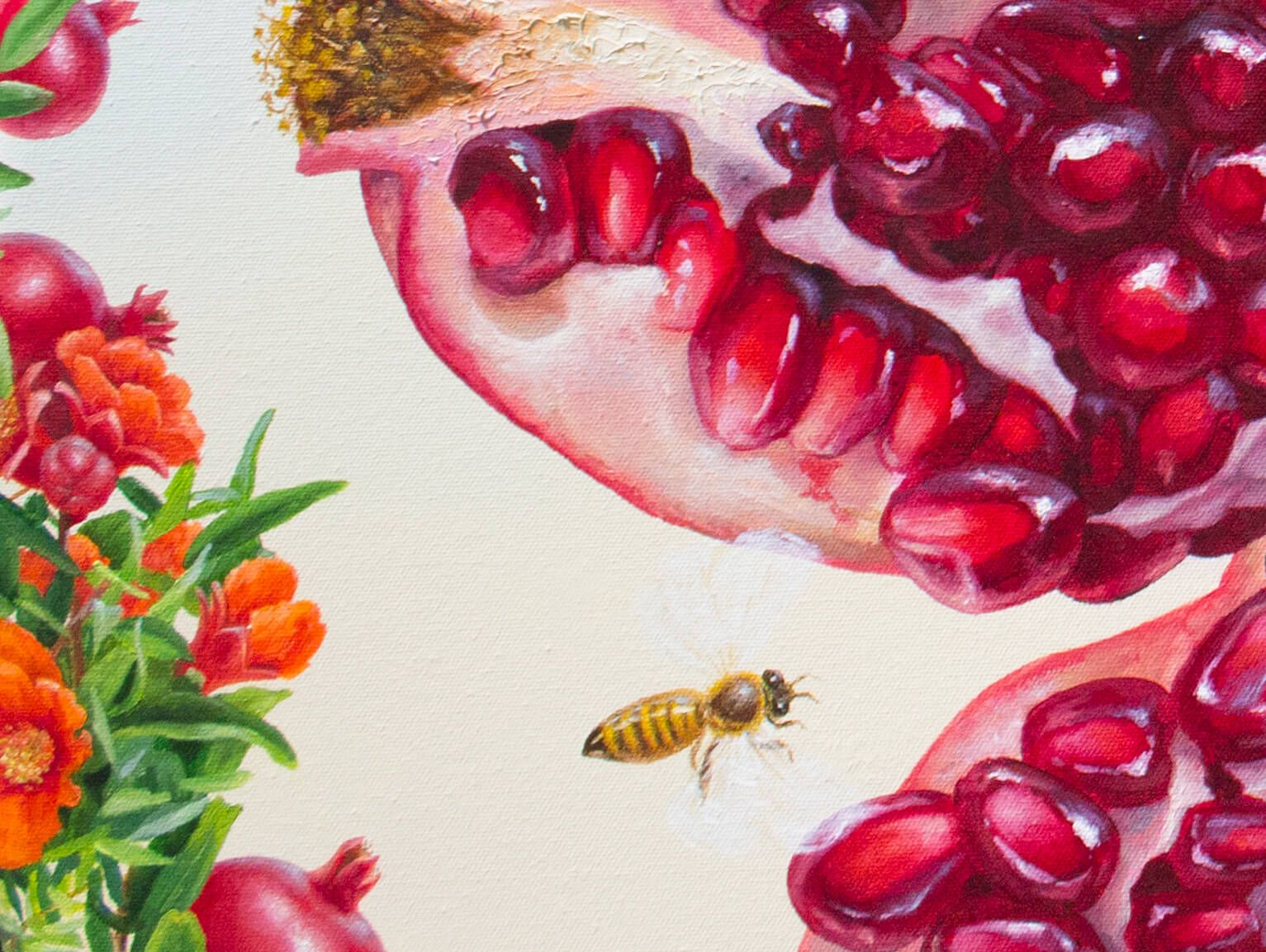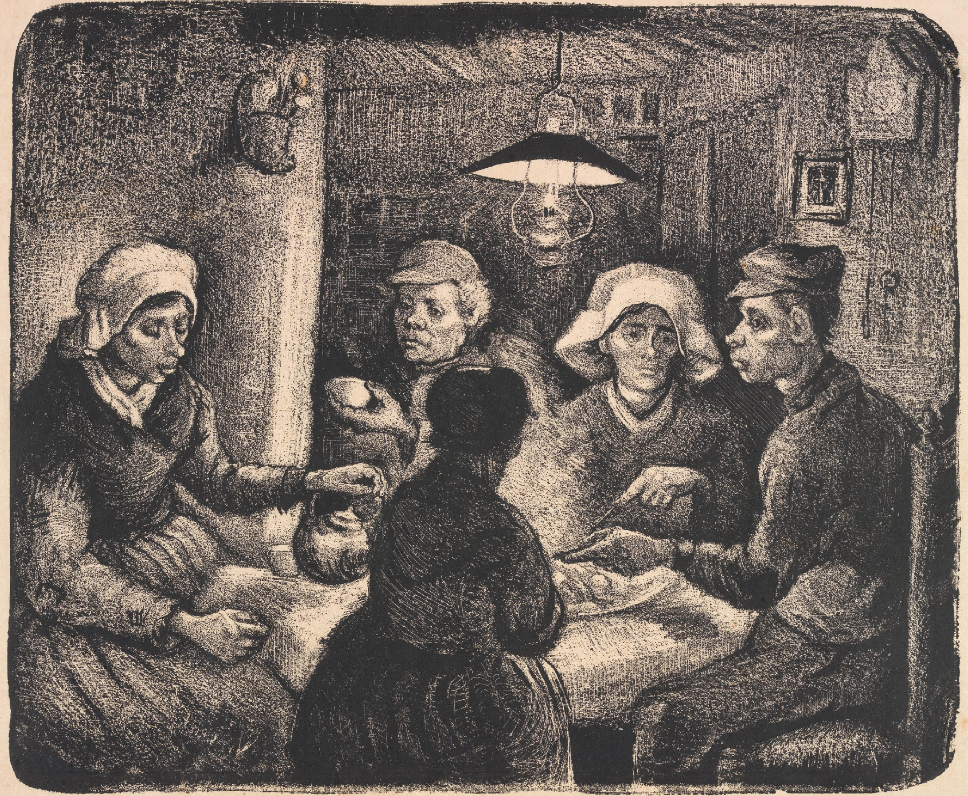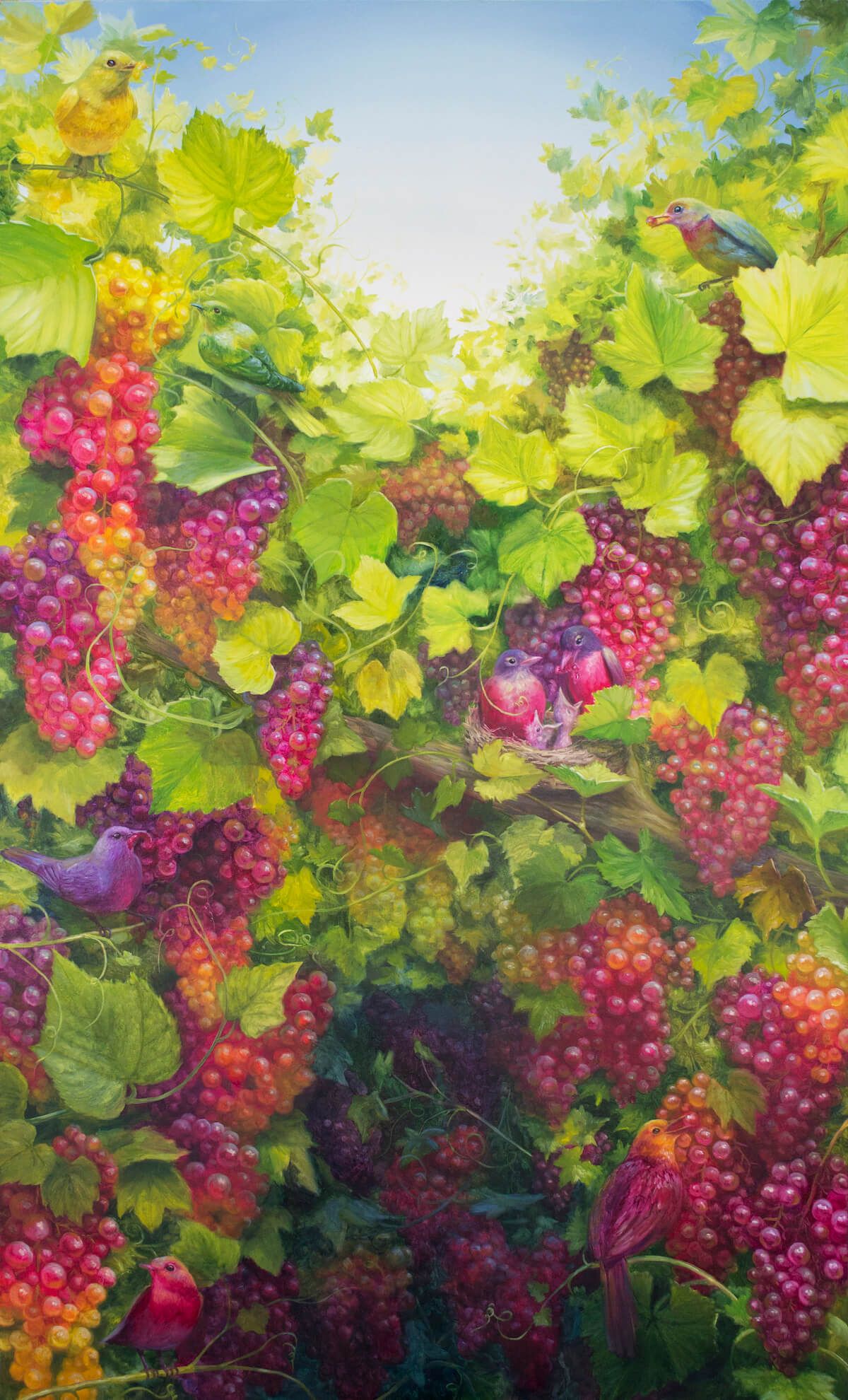Around the Table
The Stone Age table, designed by Abdullah Al-Azzaz. Courtesy of the artist.
The artist Abdullah Al-Azzaz transforms the architectural blocks from the surface of the appearance to the depth of the building, with luminous sculptures that make his art a "way of life", which can be read in the smallest details of his work.
In this era of abundance of knowledge and its ease of access, I researched the spiritual and cultural dimensions of the history of the table and its impact on human lives, and talked to the artificial intelligence "ChatGPT" about its mysteries. I then realized that my role here is not to share with you definitions or a historical narration of it, as much as share the human perspective of field specialists and form together a living extension of the history of the table.
Here we discuss the idea of "Amar Al Za’iqa" –(Constructing taste) from within a dialogue that was designed for the first time with Al-Azzaz on January 13, 2023.
Al-Azzaz documents his intellectual dimensions with a number of articles, including the fields of ideology, energy, politics and architecture; and through specialized dialogues: the dialogue of the photographers “Muflimeen” in the year 2022 - inside the Malaz House in Riyadh, and the “Interdisciplinary Design” 2023 dialogue table - inside the City Forum.
He also participated in: "Two Sides of the Same Coin" inside the (Naila) Gallery in Riyadh; among the best 30 artists of the Fine Art Competition - in the year 2016; and three of his artworks were recently shown in the photographic exhibition "Unknown Memoirs" inside Malaz House just this year.
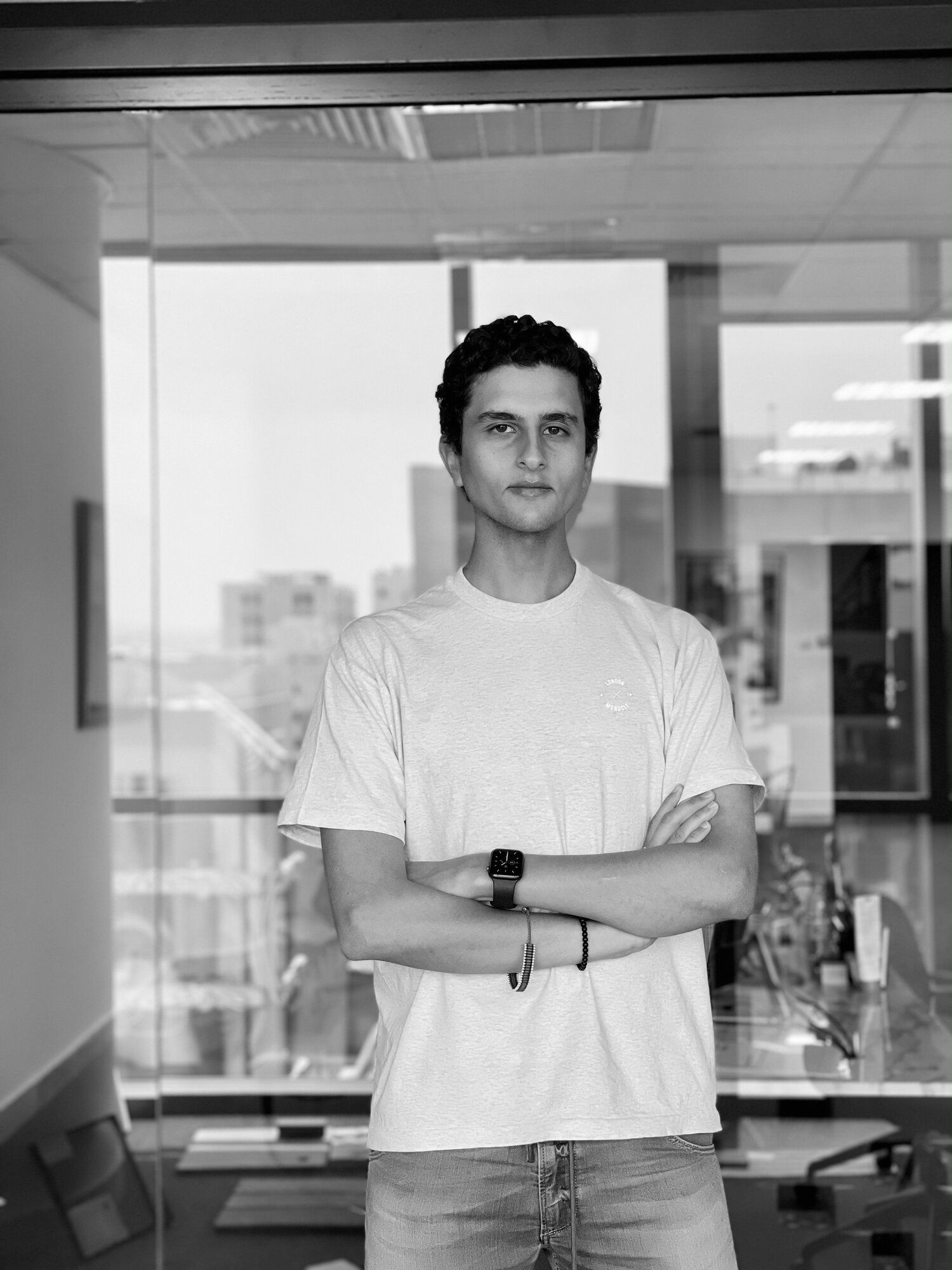
Artist Abdullah Al-Azzaz
After obtaining a bachelor's degree in civil engineering from Syracuse University,- New York, Al-Azzaz has created his own design identity, as a member and creative director of Azaz Architects since 2017.
His works are based on the fact that healthy architecture for our taste means successful architecture, and that is through philosophical gestures in mass and texture, whose connoisseur can read the signature of the exceptional artist within, in addition to being a photographer who knows how to deal with the light and the dark room; which makes Al-Azzaz's arts as a whole an independent language in itself.
Here, the artist deals with the concept of "pivot of the table", through a rich dialogue on Ithraeyat's table:
I believe that the creation of the place and the creativity of the food are an integrated experience, and it is not necessarily a single experience. The existence of one does not necessarily require the existence of the other. Sometimes a dish may be served on an earthly table in an empty place, such as “Kashta fi al-Barr” (a picnic outdoors) and it is an integrated experience. The experience may require that it be in an architectural place that supports the provided food dish.
This is a difficult question; I believe that several areas share the concept of design. And that everyone has an interest in this in various forms. I found from the dialogues and some of the discussions that I heard or had with colleagues; every designer has his own concept in this regard. When talking about the concept from which you deducted this part: “for people to share food,” we all have a unified idea of the importance of food; while we have different views on what a design concept is. This is as healthy and motivating as the fuel that powers the design wheel! Because the debate is still going on.
We have not reached the end of the line in this regard, and this is also reflected in the taste of design. We see that taste differs from one person to another, let alone from designer to designer. Everyone has an idea, experience and history. Pluralism gives different results, and thus is reflected in the difference in taste between designers.
Paris, France, photographed by artist Abdullah Al-Azzaz. Courtesy of the artist.
Your questions are fresh! Here I can draw on my personal experience of being a foodie. For me, the idea of food in our current era has gone beyond the need for food and has become an art in itself. In some advanced places, the meal served was designed before execution, and like architecture, the taste of food has become a course in design, not just food served in a dish.
When we lift the pen and start designing, I always like the idea of the question: Does design start from the need that defines the design aspect? Or do we start with the design aspect, or with the mass, or with the form? Does this determine your need, actions, or uses? Does use precede mass or does mass precede use? This question has no answer.
However, what happened in the Stone Age Table was that we dropped both options by merging them, and there was a need to create this piece - that is, use, and at the same time the idea of mass was clear from the beginning, as there was a clear tendency to create a new form for this use, inspired by nature because it was a place that reflects it. The idea was to create a dining table with all natural materials made of travertine stone.
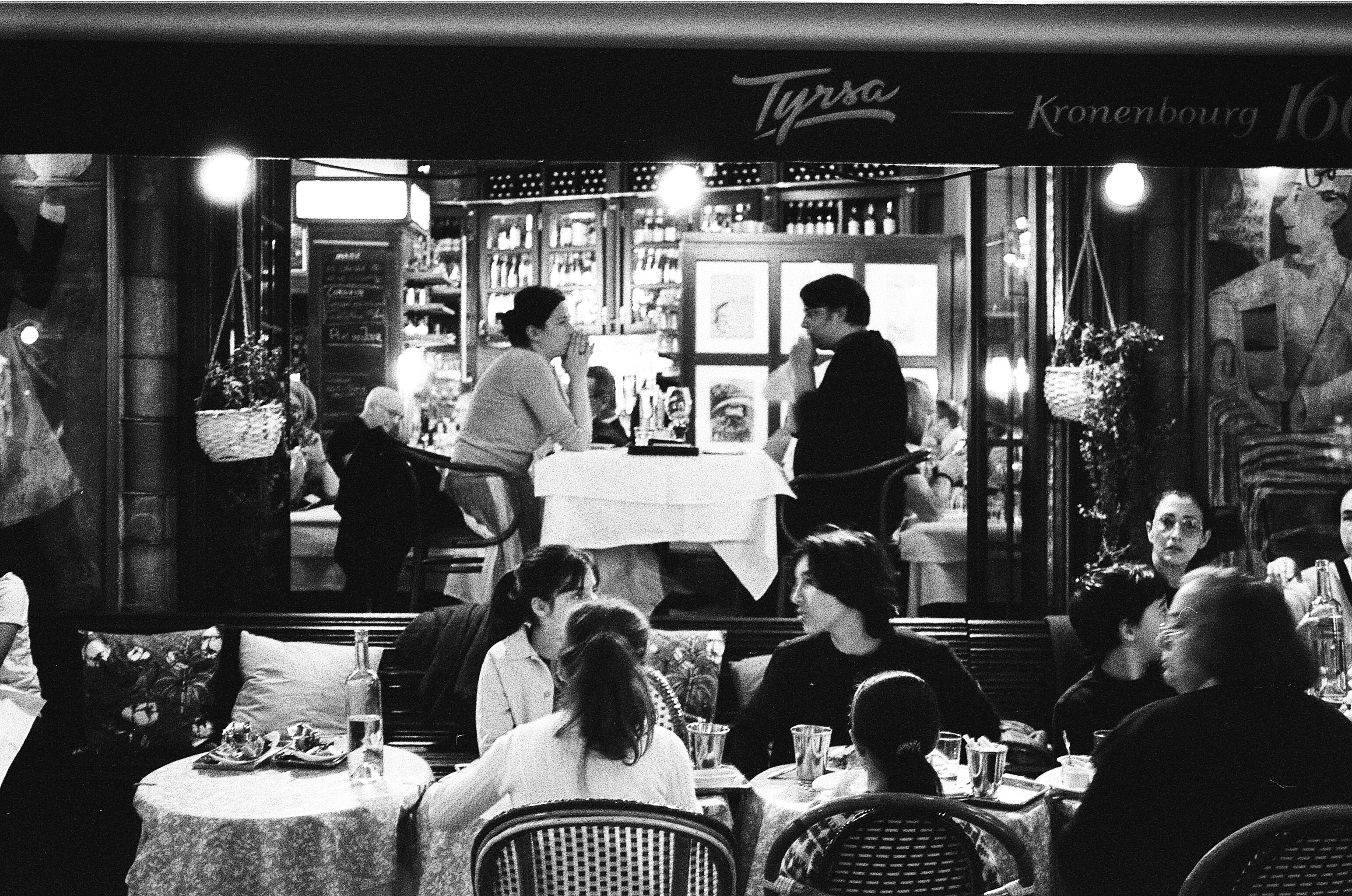
Photograph taken by the artist Abdullah Al-Azzaz. Courtesy of the artist.
Certainly, this is my first experience in designing furniture, and when I chose to design a piece of furniture, I started out of passion, because the table for me symbolizes more than just the use of dining, eating, or food. It is the gathering point of not only serving food, but also dialogues, points of view, conversations, laughter and sometimes tears!
For me, the centrality of the table with its symbolism was the beginning from which I wanted to start in the journey of furniture design. In addition to the presence of passion, desire and interest in the subject of cooking, food and taste; there were more and broader dimensions of wanting to start designing furniture.
It is not in a new style, but we have been trying from the beginning to support the design idea through language. We were always very careful to appear in English and the local language Arabic, because we are staying here and we are from this language. But the language we have is just a means to support the basic idea of "architectural design" that does not comply with the language, as it is, in the end, an idea that is created and communicated through the independent language of architecture itself.
(An international language?).. Absolutely.
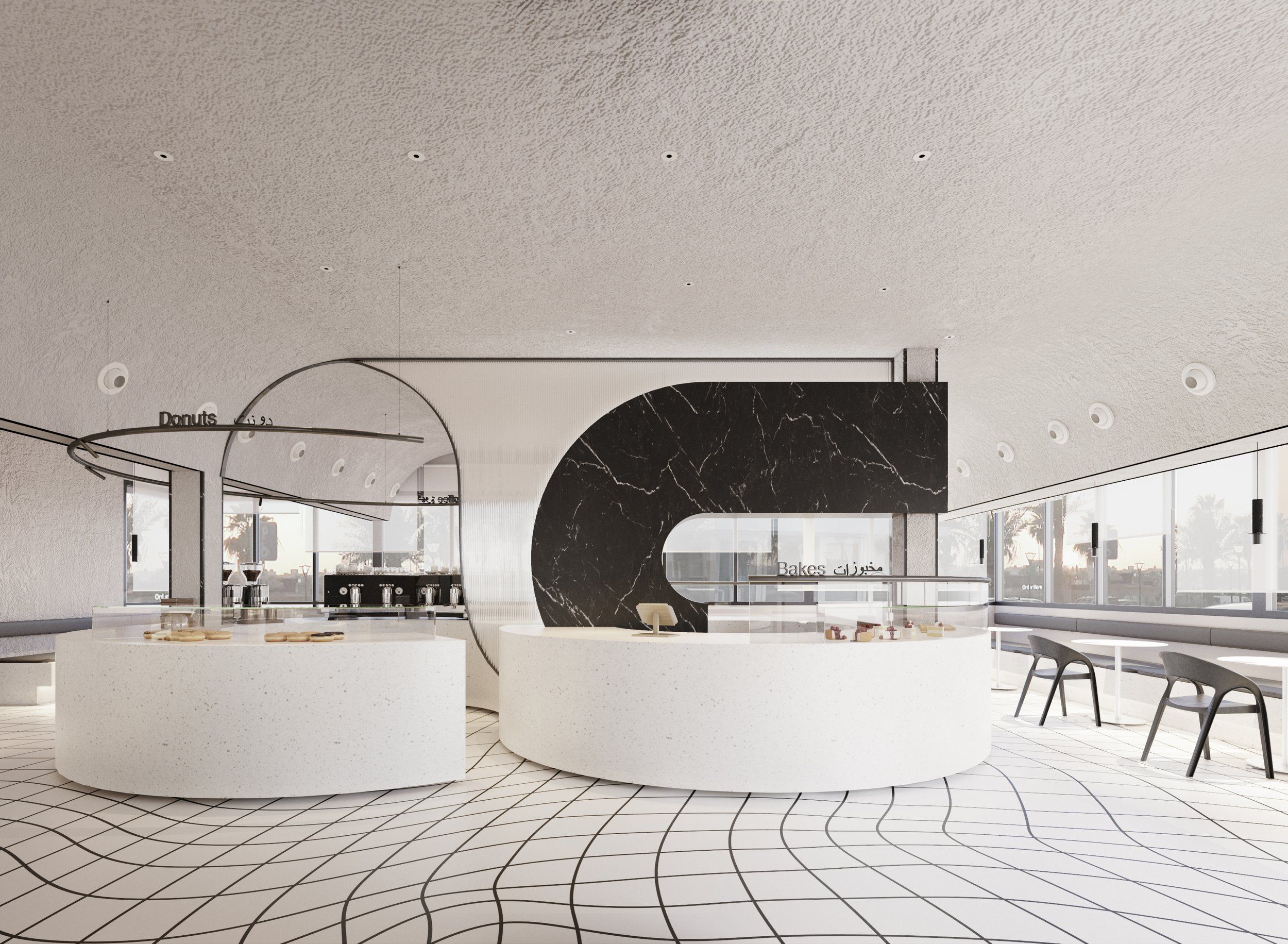
A visualization of the "Chunk, Sidra" design on Azaz Architects' page. Courtesy of the artist.
"Chunk Sidra" is our first collaboration with Chunk. I think it's a successful collaboration even though we haven't launched the advertising campaign yet. However, we saw that the place was clear. Our experience in "Chunk Sidra" is a new and unique experience because the building was based on a previous use that formed the architectural mass in a way that did not suit the new shape.
When we entered "Chunk Sidra" with its previous mass, we found that it does not match our architectural thought or the place we want to form, and it may have been the most difficult project that we designed due to the presence of physical and structural obstacles in the building, which limited the possibility of starting from scratch. The building existed in many forms and barriers, but from the difficulties we created light. We were keen for it to be a source of light, and that is why it is a luminous building... white.
We thank the brothers in "Chunk" for supporting us by drawing inspiration from many ideas through their creative identity. We drew a lot on Chunk's brand identity profile for architectural inspiration. We were keen that the project was not just an interior design as much as we were trying to bring architectural blocks to the interior, and I think we were very successful in that. I would like to note that this is not the last collaboration with “Chunk” group; we have several projects that will be launched and will see the light soon, God willing.
“Hopefully, it will be as radiant as Chunk Sidra.”
Regarding the mixture between taste and architecture, they are two sides of the same coin, that building a healthy architecture depends largely on the concept of taste, and that building a successful architecture must appeal to the taste of the recipient, the designer, the owner of the project, and all relevant parties.
Taste here may go beyond the idea of objectivity to reach the idea of science, and to build a successful architecture several conditions must be fulfilled, including that the place is suitable for agreed upon standards before starting the design. I believe that taste is built with experiences and history, and to some extent we can build taste by developing certain sciences and experiences and integrating people to embark on a specific path.
But we certainly cannot control the unification of taste. When we try to build a specific taste, we can draw factors that lead to its improvement, but I do not think that we can define or build it on a broad level, because each individual has his own experience and history with which he builds his taste.
